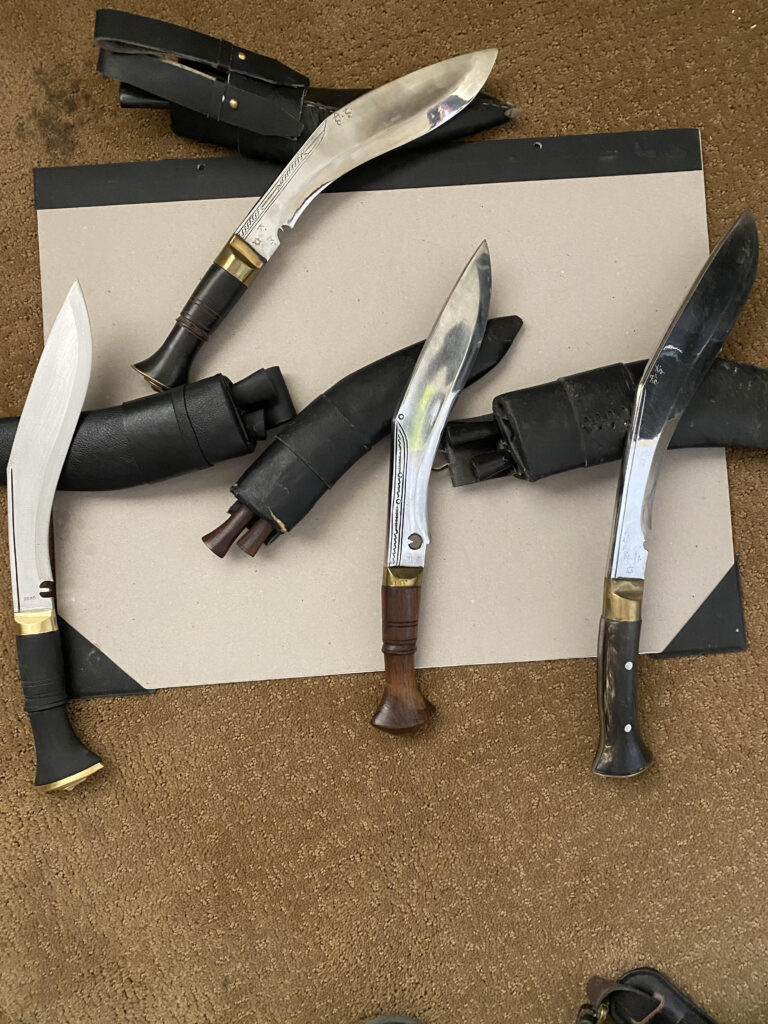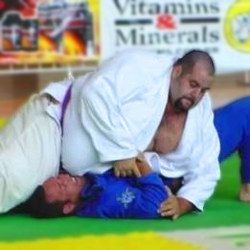I have been a knife nerd for as long as I can remember, even prior to becoming a martial art nerd. There has always been something that appeals to me about a good and functional blade. Even something like a Japanese chef’s sushi knife is fascinating to me.
Unfortunately, when I was at my most edged weapon obsessed – when I was spending hours a day training some Filipino Martial Art system, I rarely had the money to indulge in the need to buy them all. High school and college had me as a poor student, and then not too long after graduating from Arizona State I got married and had a kid on the way and what little money we had went to that. So I did not buy too many of the blades I coveted; they were just out of my wallet range. The only ones I could really semi-collect were kukris.
For those who don’t know, the Kukri is the traditional blade of the Nepalese Ghurka soldier and has been for centuries. I was able to buy a couple of the good versions Atlanta Cutlery sold in the 80’s and 90’s, as well as a crappy BudK knockoff. They were stinking cheap (I think the Atlanta ones were around $30) but built like a tank. Not particularly fast in the hand, they were excellent field tools. I abused the hell out of mine.
Then as I got a bit more free spending cash, and the internet made things a bit easier, I found Himalayan Imports on Blade Forums. Uncle Bill, the owner, was married to a Nepalese woman and built an import business bringing in authentic Kukris made by hand in local villages. He had a set catalog, but on occasion would get extra shipments of different Kukris, including versions that individual craftsmen came up with (there is no one single Kukri form – there are hundreds of versions all based on villages and areas in the country) and sell them at a discount. I bought a number of these. I had a small 8” bladed version that I kept in a SHTF backpack in my car. I can’t find it now and must have lost it in the move to the new house a few years ago. I also had an older WW1 era version of the one issued by the British Army to their Ghurka troops. It was big and heavy with a pronounced belly and it was a great chopper as well as a pretty good hammer. I actually used it to do yard work at my old house. It made easy work of cutting down branches from Palo Verde trees. Not particularly mobile or quick moving, but it packed a big chop.
I also had an HI version of the 90’s era British Army issue Kukri. This was an improvement over the WW1 version as a general utility tool. Not as big or heavy, it was still a good chopper, but lighter and easier handing, and easier to carry on a belt or attached to a backpack.
The Himalayan Imports one I liked the best was a Sirupati model. The Sirupati is lighter and has a thinner handle, and the angle of the blade turn is not as pronounced. It tends to be thought of as more of a pure “fighting” Kukri, and a bit less of an all around model, though it still does a fine job at general tasks. This is the one that really got my FMA nerdiness going when I first got it.
I had not bought any newer Kukris in years since I am not a “collector” in the truest sense. I get things to use, not just to have, so I didn’t feel an overwhelming need to buy more. These tended to cover any possible need I had for this size of blade. That is until about six weeks ago when talking to a buddy of mine who was also a knife nerd, I got a bit nostalgic and went online to look at Kukris and to see if there was anything new under the sun. And to my surprise, there sort of was. A company called Kukri House had a nice website and a good and wide selection of blades, and they were also suppliers to the British Army, and as such, had the latest model being issued to Ghurka troops in British service. The new current Army issue is a tad different from the previous one and I decided to buy one. My total cost was only $72 dollars and I only had to wait a month to receive it. Considering the current shipping and mailing issues going on, I felt that was more than fair coming from Nepal. Another nice touch from Kukri House is they send you a bio of the person who actually crafter your particular blade. That was kind of cool. It made it a bit more personal and almost like I was getting a custom blade without paying a custom price tag.
And the blade itself? In my opinion, this is the ideal Kukri. Big and heavy enough to be a solid chopper, it is also light and fast in hand, that makes it a good fighting weapon. And this model has a less pronounced angle, so you can actually get a good straight thrust attack, which cannot be said for almost any other Kukri. The thrust angle is somewhat reminiscent of the TDI Kabar knife. The handle is without a doubt the most comfortable one I have ever held. It is almost as if it had been made specifically for my hand. This is a blade that can be carried easily for long periods or easily stored with survival gear in a car and it takes up little room. I really wish I had found this kukri a long time ago. Now excuse me while I go play with it with the giddiness of a schoolgirl.









